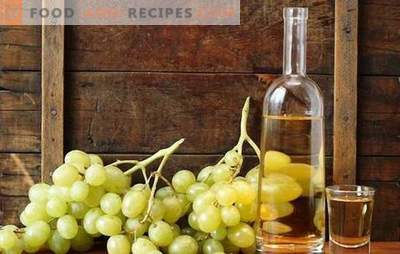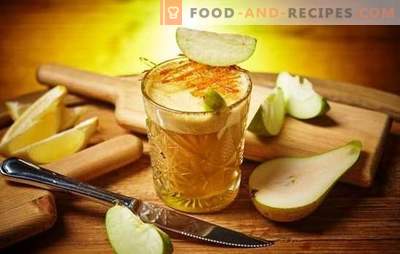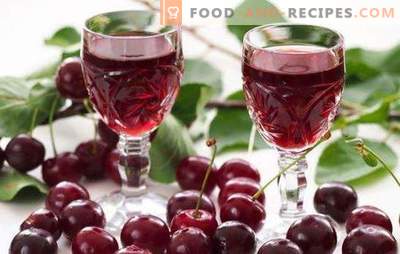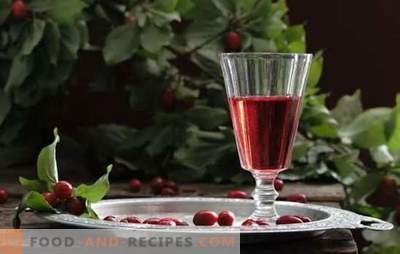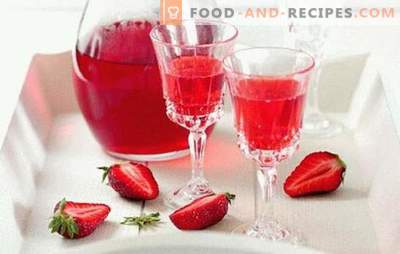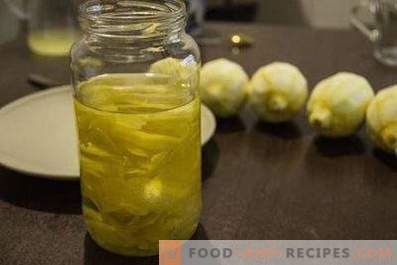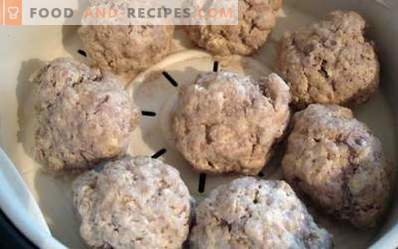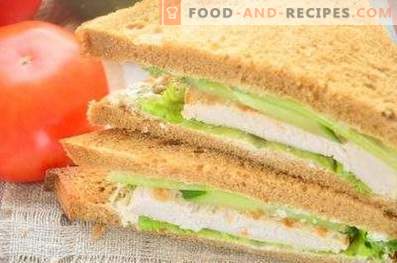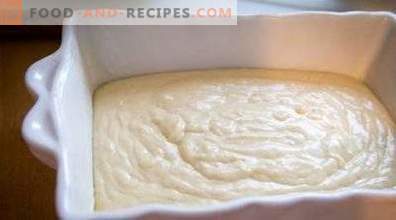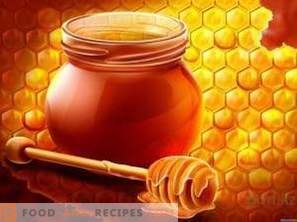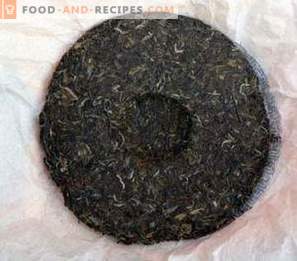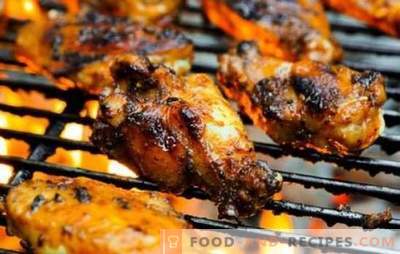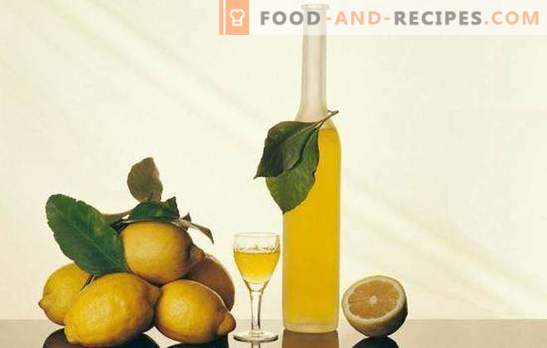
Before the infusions became an attribute of the feast, they were invented exclusively as a medicine, as herbal infusions (on water) have a shorter shelf life.
In addition, thanks to the alcohol content in the tinctures, the beneficial elements of herbs, fruits and spices are much faster and more fully absorbed by the body.
Lemon tincture - basic technological principles
Speaking about the secrets of making homemade tinctures, let us begin with the main technological principles for a general understanding of the process of preparing and classifying all types of tinctures. By the way, this understanding will allow you to move on to improvisation, and, perhaps, help you come up with your own unique recipe, which will delight your friends and neighbors in the country house at the holiday table.
All tinctures, including balms, liqueurs and liqueurs, which are subspecies of fruit, berry, herbal or spicy extract (tincture), are classified by sugar and alcohol content. Although in home cooking these indicators are not controlled by GOST, it must be borne in mind that the percentage of sugar and alcohol ultimately determines the taste of the finished product, its strength and, finally, quality, which is directly related to the duration of storage.
The range of beverages containing zest, juice, alcoholic extract or lemon essential oil ranges from low alcohol alcoholized juices, 6–12% alcohol, to balms containing from 30 to 45% alcohol and bitter tinctures (30–60%).
On the sugar content of lemon tincture, it can be bitter, sweet or semi-sweet.
Tincture may contain 18-30% sugar. A higher percentage (up to 40%) translates lemon tincture into another subtype of alcoholic beverages - liqueurs, which are based on the technology of extracting juice-containing products. And finally, tinctures with sugar or sweetener content up to 50% are liqueur group. As can be seen from these figures, the range of lemon tincture on the content of alcohol and sugar can be significantly expanded only through these two indicators.
Of course, the main ingredient in lemon liqueur is exotic citrus, which has become so familiar product that its East Asian origin is already remembered less and less. But its flavor is so distinct that the presence of lemon in any product immediately becomes noticeable.
Classic lemon tincture is prepared from the peel of the fruit, because it is she who decorates the drink, passing the essential oils contained in it to the alcohol base.
The basic recipe for lemon liqueur
3/4 of any suitable container tightly fill the removed peel. Add ethyl alcohol (96%) to completely cover the raw material. The extraction process can be significantly accelerated if the zest is previously held for at least half an hour in the freezer and then crushed thoroughly. Infusion of the product is best done, on the contrary, in the warmest conditions. We must remember that the color of the tincture changes under the influence of light, and it will not be possible to get a bright lemon shade. Therefore, stock up on a bottle or jar of dark glass and keep this dish in the kitchen cupboard. Do not forget to shake capacity for one and a half to two months at least once every two to three days.
The main lemon tincture can be prepared in any season, due to the availability of ingredients. If only lemon juice is needed for cooking, then the zest can be pre-removed and put in the freezer until it reaches the next batch of lemon tincture.
Ready-made semi-finished product is useful at any time, not only for making drinks, but also as a flavoring for baking and desserts.
The same preparation can be made on the basis of cognac. But it must be remembered that its strength reaches only 45%, so the tincture will be less strong and the extraction will take about two times longer. For the preparation of the main lemon tincture, sweet, to the base extract you will need to add thirty-percent sugar syrup based on water.
To get the desired strength of the tincture it will be very convenient to use an alcoholometer and bring the alcohol content to the desired value, with purified water or concentrated juice. After diluting the alcohol base, ready-made lemon juice is left for aging, for at least a week, to improve the taste.
Tinctures can be prepared in another way, mixing at the same time all the ingredients and sending them for aging.
Considering the universal combination of lemon with many products used both for making drinks and for dishes that can be decorated with lemon aperitif, let us briefly discuss the compatibility of spicy ingredients in lemon tincture.
Lemon fruit supplement:
Oranges and all citrus;
Almost all dried and fresh berries;
Apricots;
Bananas;
Pears;
Cherries;
Peaches;
Mango;
Melon;
Persimmon.
In addition, dried fruit and nuts are perfectly combined with lemon essential oil, especially almonds. Very suitable cream, coffee, chocolate, milk, different types of honey.
From spicy aromas it is most combined with citrus notes vanilla, cinnamon, cardamom, anise, pine juniper aroma, ginger.
For lemon liqueur, mint, chamomile, tea-rose petals, berries and mountain ash, lemon balm, green pine cones, bergamot, jasmine flowers, lindens can serve as a great addition.
By the way, the basis can be not only ethyl alcohol or vodka, but also rum, cognac, whiskey, gin, calvados and any strong alcoholic beverages.
This list of additional ingredients can be significantly expanded, but the above is already more than enough to create in the home bar an assortment for every taste.
All recipes tinctures can be considered “democratic” - they do not require strict adherence to the composition and proportions. From the proposed below, you can choose any recipe, add it, or, conversely, remove a component, according to personal preference.
Recipe 1. Lemon Cardinal Tincture, strong, semi-sweet
Composition:
Jasmine, dried flowers - 3 tbsp. spoons
Lemon peel - 50 g (fresh lemons)
Chamomile, pharmacy (flowers) - 2-3 table. spoons
Sugar syrup, caramelized - 180 g (for blending)
Vodka (40%) - 500 ml
Ethyl alcohol - 200ml
Water 250 ml
Cooking:
Fresh lemon peel, chamomile flowers and jasmine should be placed in a gauze package and put on the bottom of a suitable container with ethyl alcohol.
The extraction process in alcohol is faster than in alcohol with a lower concentration of alcohol. Therefore, after 72 hours you will receive a completely full extract. To enhance the effect, it can be heated to 60 degrees in a closed jar. Chamomile flowers will give a slight tartness to the tincture, and also color it in a nice golden color. Ready syrup, with a characteristic smell and taste of caramel, dilute with cooled boiled water, pour vodka into the same container first, and then the resulting extract, previously passed through a multilayer filter. Infusing the product is better at room temperature and in a tightly closed container.
Recipe 2. Lemon “Russian” tincture, strong
Composition:
Cognac - 0.7
One large lemon
Sugar 0.5 cup
Cooking:
In European countries, it is believed that lemon has too rich aroma and therefore it does not combine with brandy. However, from the time of Nikolayev in Russia, it was lemon that became the best addition to the exquisite cognac flavor. An unknown cook at the court of Nicholas II served the emperor with a lemon and sugar as a snack, which the latter was pleased with.
Peel the lemon peel, cut it in half, squeeze the juice. Combine sugar with juice and heat to dissolve. The resulting syrup is poured into cognac and toss the lemon zest removed from the lemon. Close the jar and put in the heat. After a week, you can try the tincture.
It can also be used to soak biscuits or in the preparation of creams and desserts.
Recipe 3. Lemon Potion “Love Potion”
The truth is that the composition below, in combination with lemon and alcohol, actually stimulates the reproductive system, while helping to fight stress and fatigue. All ingredients are quite affordable “magic tools”.
Raw materials:
5 oranges
Hawthorn tincture 75 ml
2 lemons
100 g almonds
Turmeric 30g
Vodka 2.5 liters
Honey, liquid 500 g
Cooking:
Peel the citrus. All the spicy ingredients chop and pour vodka, combined with hawthorn extract, citrus juice and honey. Not less than 10 days, you can filter the finished tincture.
Recipe 4. Lemon tincture, bitter
Composition:
Lemon
Wine alcohol (50%) 1 l
Coriander (seeds)
Muscat (walnut)
Mint
Preparation:
Cut the lemon into slices, add the alcohol solution along with the peel and the added spices. To sustain at a temperature not lower than 18oC up to one month. Squeeze the fruit, carefully filter and pour into bottles.
Recipe 5. Lemon liqueur with bananas and strawberries
Such a fruit and berry combination has long been considered a classic. In fact, sweet liqueurs are liqueurs, and the technology for their preparation is only slightly higher in sugar content in liquor drinks.
Raw materials:
Lemon tincture, bitter (60%) - 0.5 l (basic recipe)
Bananas - 500 - 600 g
Sugar -1.3 kg
Strawberries - 0.5 - 0.6 kg
Vanilla - 1-2 pods
Lemons - 2-3 pcs.
Preparation:
Peeled bananas tend to darken when exposed to air, which can give the liqueur a completely unappetizing, grayish color. To avoid this, you need to prepare in advance the juice of strawberries and lemon, in which immediately drop the pieces of banana pulp. To the fruits add sugar, fresh zest, vanilla and lemon tincture. Pulp bananas and strawberries through a sieve: tincture should get a creamy consistency. Insist at least fourteen days. Such a drink can be stored for a long time in the refrigerator.
Recipe 6. Lemon tincture with cinnamon and pear
Composition:
8-10 pears
5 medium lemons
2 cinnamon sticks
750 ml of ethanol (70%)
5 glasses of sugar
Preparation:
Lemon zest, cinnamon and pear skin separately insist in 100-150 ml of alcohol. Chopped pear pulp and lemon juice combined with sugar and the rest of the alcohol. Shake both containers daily for 14-15 days without opening the can. At the expiration of this period, merge their contents through a multilayer filter (do not wring out, but allow to flow arbitrarily) and connect. Let it stand for a couple more weeks.
Recipe 7. Lemon tincture “Christmas mood”
Composition:
250 g sugar
1 vanilla pod
1 orange
50 g of dried juniper fruits
1 lemon
1 bottle (0.75 L) of lemon tincture, bitter (60%)
Cooking:
Remove the zest from citrus fruits and, at least a week, pour it along with vanilla and juniper berries tincture (take 1/3 of the volume specified in the recipe). Combine the rest of the tincture with fruit juice and mix with sugar: you can warm it up a little in a water bath, but at the same time you need to fill 3/4 of the volume with the alcoholized juice and close it tightly. Combine both mixtures after settling, mix and hold the finished New Year tincture for at least 2-3 days.
This tincture can be prepared from young pine cones, using them instead of juniper berries.
Recipe 8. Lemon tincture - Italian classics
Raw materials:
150-200 g peel from fresh lemons
0.5 kg of sugar
0.5 liters of alcohol, drinking (96%)
500 ml of water
Cooking:
It will take 15 days to prepare the southern Italian “Limoncello”: you will need 10 days to insist the peel on alcohol, and another 5 days to extract the spirit tincture with sugar syrup, which will need to be cooked from the specified number of ingredients, until a drop is spreading. Lemon juice is not used in the traditional tincture. “Limoncello” is frozen before serving.
Lemon Tincture - Tricks and Tips & Tricks
• Extract of lemon zest and undiluted ethyl alcohol can serve as an excellent preparation not only for preparing many dishes, but also to become a useful product in everyday life.
• Thoughtfully add herbs to lemon infusion, mindful of their medicinal properties, so as not to create an alcoholic beverage with conflicting properties that can harm health.
• Using honey as a sweetener, it is helpful to know that it is a sweeter and heavier product. Instead of 100 g of sugar according to the recipe, you can use 60 g of honey. In addition, honey contains liquid and acid. This also needs to be considered in the preparation.
• Be very careful about the choice of alcohol for making tinctures, and remember: methyl alcohol is technical, and ethyl alcohol is drinking.
Alcoholic beverages can be enjoyable and beneficial if you learn to cook and use them properly.
